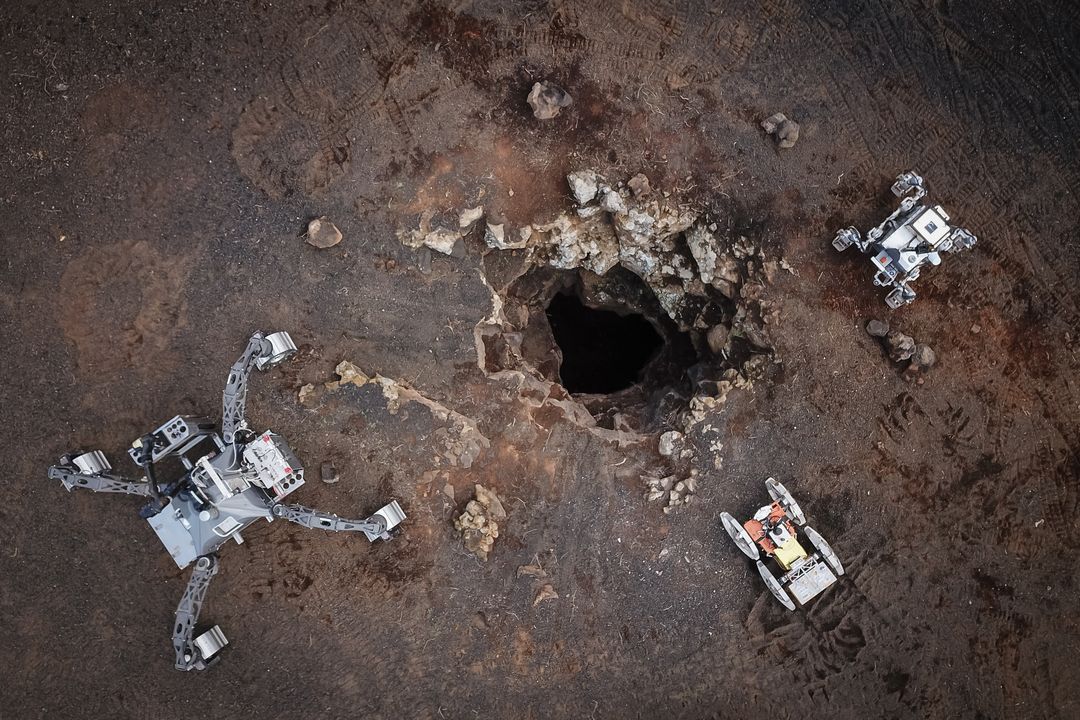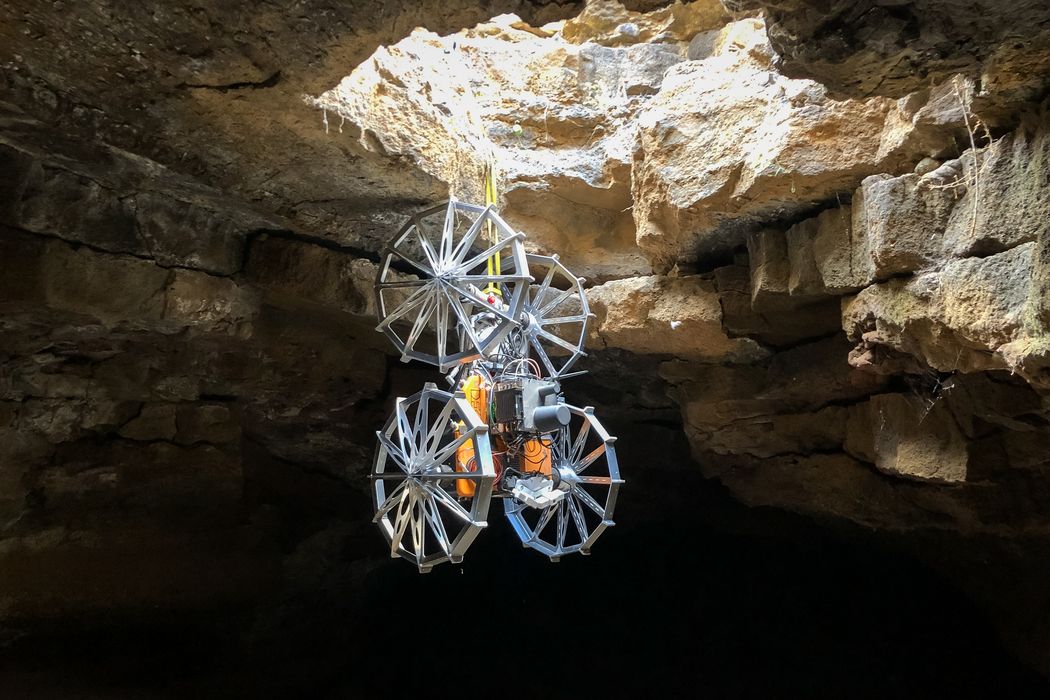
Exploring the Moon’s hidden caves: European researchers present innovative mission concept in the renowned journal Science Robotics
| Robotics | Robotics Innovation Center | Bremen

The core of the mission concept is the step-by-step exploration of a so-called skylight – a collapse hole providing access to an underground lava tube. The concept is divided into four phases: cooperative mapping of the skylight surroundings (phase 1); deploying a sensor cube into the cave to collect initial data (phase 2); rappelling a scout rover through the skylight (phase 3); and autonomous exploration including detailed 3D mapping (phase 4).
 © DFKI, Tom Becker
© DFKI, Tom BeckerIn a field test on the volcanic island of Lanzarote in February 2023, this concept was successfully validated using three specialized rovers: the two DFKI systems SherpaTT and Coyote III, and the LUVMI-X developed by Space Applications Services (Belgium). First, the robots jointly mapped the environment and skylight (phase 1). Then, the compact rover LUVMI-X placed a sensor cube into the entrance to collect initial measurements inside the cave (phase 2), providing data to select a suitable rappelling point. Subsequently, the robust SherpaTT lowered the agile Coyote III into the cave in a controlled manner using a cable winch (phase 3). After decoupling from the docking mechanism, Coyote III explored the difficult-to-access underground area, successfully generating a detailed 3D model of the cave (phase 4) – a key milestone for applying such technologies in extraterrestrial missions.
The results not only confirm the technical feasibility of the concept but also demonstrate the potential of collaborative robotic systems for use in future Moon or Mars missions. The study thus provides valuable impetus for the further development of autonomous robotic solutions in the context of planetary exploration.
Publication title: Cooperative Robotic Exploration of a Planetary Skylight Surface and Lava Cave
Authors: Raúl Domínguez (DFKI, Universität Bremen), Carlos Perez-del-Pulgar (Universidad de Malaga) Gonzalo J. Paz-Delgado (Universidad de Malaga) Fabio Polisano (Space Applications Services), Jonathan Babel (DFKI), Thierry Germa (Magellium), Iulia Dragomir (GMV), Valerie Ciarletti (LATMOS), Anne-Claire Berthet (Magellium) Leon Cedric Danter (DFKI), Frank Kirchner (DFKI, Universität Bremen)
The publication is available online at: Cooperative robotic exploration of a planetary skylight surface and lava cave | Science Robotics
The presented concept was developed within the framework of the European Commission-funded project CoRob-X (“Cooperative Robots for Extreme Environments”), which was coordinated by the Robotics Innovation Center of the German Research Center for Artificial Intelligence (DFKI). Since 2021, nine European partners have been developing key technologies for autonomous robotics in extreme environments. CoRob-X was part of the Strategic Research Cluster “Space Robotics Technologies,” implemented under the EU Horizon 2020 funding program as part of the PERASPERA initiative.
Contact:
Raúl Domínguez, M.Sc.
- Raul.Dominguez@dfki.de
- Phone: +49 421 17845 6617